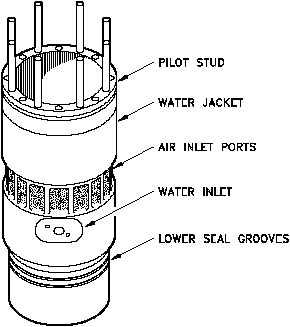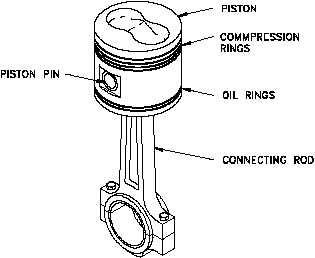Diesel Engine Fundamentals
DOE-HDBK-1018/1-93
DIESEL ENGINES
In engines using sleeves, there are two
Figure 5 Diesel Engine Wet Cylinder Sleeve
types of sleeves, wet and dry. A dry
sleeve is surrounded by the metal of
the block and does not come in direct
contact with the engine's coolant
(water). A wet sleeve comes in direct
contact with the engine's coolant.
Figure 5 provides an example of a wet
sleeve. The volume enclosed by the
sleeve or bore is called the combustion
chamber and is the space where the
fuel is burned.
In either type of cylinder, sleeved or
bored, the diameter of the cylinder is
called the bore of the engine and is
stated in inches. For example, the
bore of a 350 cubic inch Chevrolet
gasoline engine is 4 inches.
Most diesel engines are multi-cylinder
engines and typically have their
cylinders arranged in one of two
ways, an in-line or a "V", although other combinations exits. In an in-line engine, as the
name indicates, all the cylinders are in a row. In a "V" type engine the cylinders are
arranged in two rows of cylinders set at an angle to each other that align to a common
crankshaft. Each group of cylinders making up one side of the "V" is referred to as a
bank of cylinders.
Figure 6 Piston and Piston Rod
Piston and Piston Rings
The piston transforms the energy of
the
expanding
gasses
into
mechanical energy. The piston rides
in the cylinder liner or sleeve as
shown in Figure 2 and Figure 3.
Pistons are commonly made of
aluminum or cast iron alloys.
To prevent the combustion gasses
from bypassing the piston and to
keep friction to a minimum, each
piston has several metal rings around
it, as illustrated by Figure 6.
Rev. 0
ME-01
Page 7



